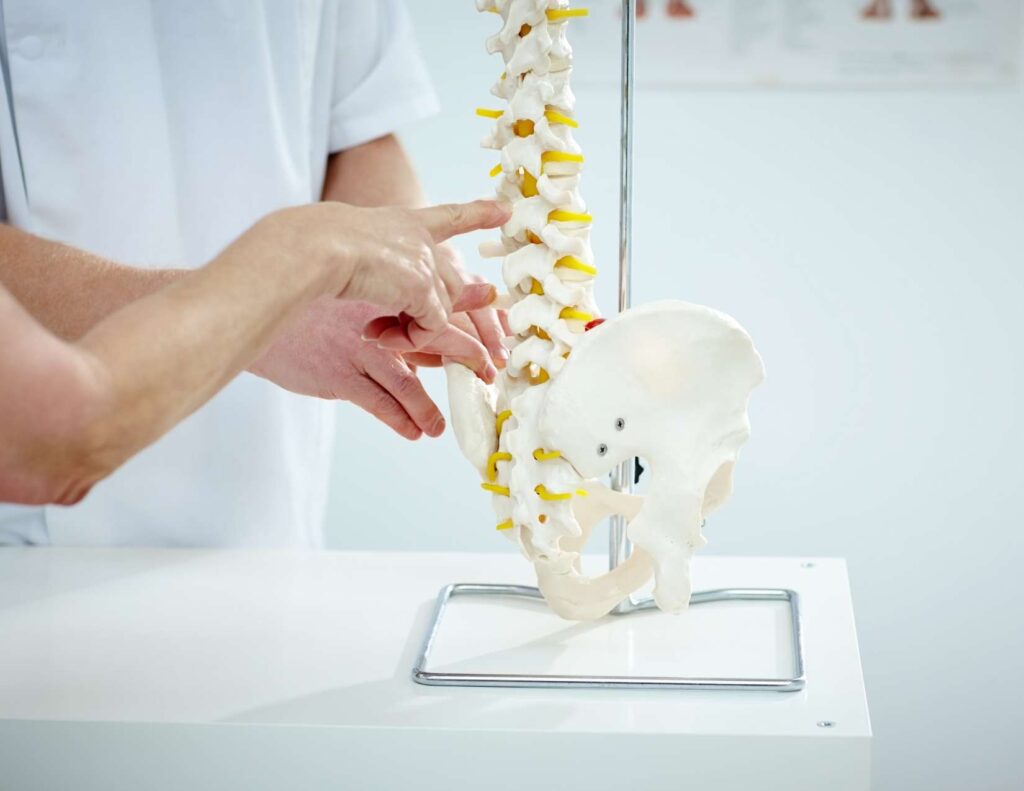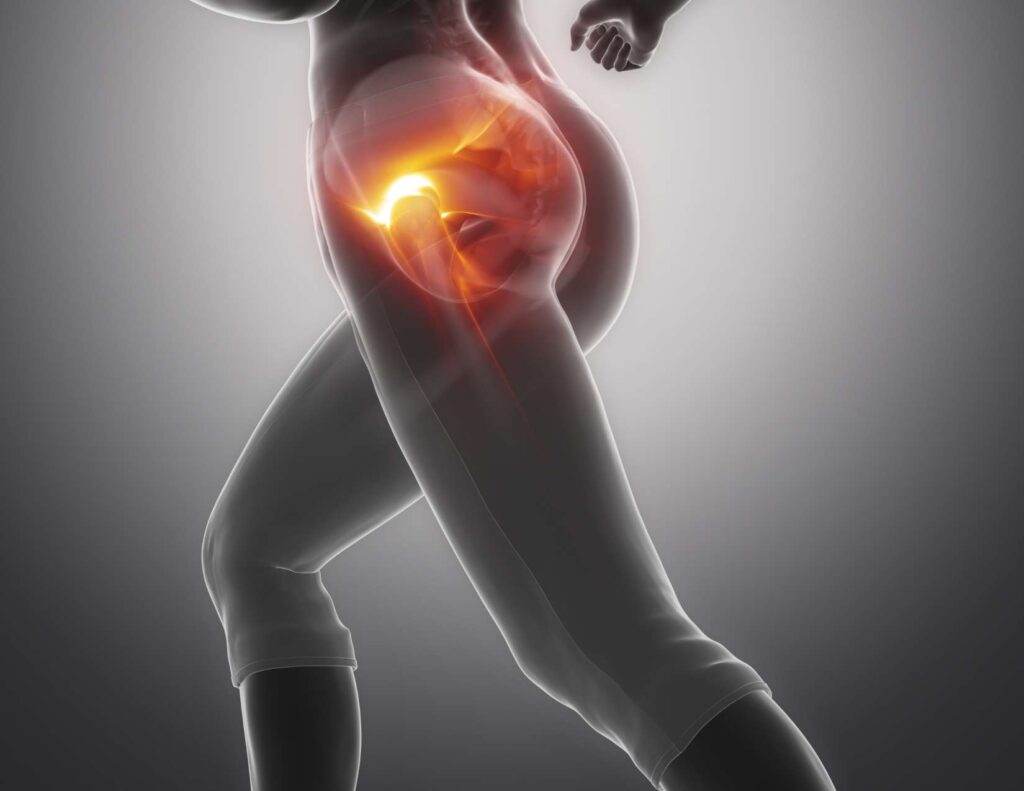How Can a Chiropractor Help with Hip Bursitis?
Hello, and welcome! If you’re reading this, chances are you or someone you care about is dealing with hip bursitis. You’re not alone. Hip bursitis, a painful inflammation of the bursa in the hip joint, affects a significant number of people across the globe. Many people turn to medications or even surgery to manage this condition. But these are not the only options. In this article, we take a detailed look at a potentially beneficial treatment option that you may not have considered: chiropractic care and how can a chiropractor help with hip bursitis?
Table of Contents

Introduction to Hip Bursitis
Bursas are small, fluid-filled sacs that act as a cushion between your bones and the soft tissues. When it becomes inflamed, it can cause pain and discomfort. This condition is more common in women and individuals over the age of 50, but it can affect anyone. There are two different types of hip bursitis, including iliopsoas bursitis and trochanteric bursitis (hip area).
The most common symptom of hip bursitis is a sharp, burning sensation or pain in the hip joint and surrounding areas. This pain may be worse when you move your hip, do repetitive motions, apply pressure to it, or spend extended periods of time in one position. Other symptoms of bursitis may include tenderness around the area, swelling, warmth to the touch, and difficulty with movement.
Understanding Chiropractic Care
Before we delve into the question, “can a chiropractor help with hip bursitis?”, it’s a good idea to first understand what chiropractic care is. Chiropractors focus on the diagnosis and treatment of neuromuscular disorders, primarily through manual adjustments or manipulation of the spine.
Their goal is to reduce pain and improve functionality while educating patients on how they can account for their health through daily activities via exercise, ergonomics, and other therapies to treat pain. But chiropractic care isn’t just about the spine and back. Chiropractors can address a range of issues related to the musculoskeletal system, including hip bursitis.
It’s important to note that chiropractors are not medical doctors, but they undergo extensive training to understand the body’s musculoskeletal structure and how it functions. They can provide a different perspective and approach to your health, which can be quite beneficial.
Can a Chiropractor Help with Hip Bursitis?
So, can a chiropractor help with hip bursitis? In short, the answer is yes. Chiropractic care can be an effective treatment option for individuals suffering from hip bursitis. It’s a non-invasive, drug-free approach that can provide relief for many patients.
Chiropractic care works by addressing the root cause and the source of pain rather than just treating the symptoms. This holistic approach can lead to long-term relief, and in some cases, it may even prevent the condition from recurring.
It’s important to remember that every individual is unique, and what works for one person may not work for another. That’s why it’s crucial to consult with a trained and experienced chiropractor to discuss your symptoms, medical history, and treatment options.

How Chiropractors Treat Hip Bursitis
Chiropractic treatment for hip bursitis generally involves a combination of chiropractic adjustments, physical therapy, and lifestyle advice. The specific treatment plan will depend on your unique needs and circumstances.
Chiropractors may use spinal adjustments to correct any misalignments that could be contributing to your hip pain. Conditions such as sciatica, arthritis, hip impingement and bursitis can all be treated with chiropractic adjustments. They also use different techniques to reduce inflammation around the affected area.
Physical therapy exercises can strengthen the muscles around the hip, improve range of motion, and reduce pressure on the bursa. Your chiropractor may also recommend changes to your diet and lifestyle to improve your overall health and reduce inflammation in your body.
Benefits of Chiropractic Treatment for Hip Bursitis
Chiropractic care offers several benefits for individuals with hip bursitis. First, it’s a non-invasive treatment, which means you won’t have to worry about the risks and recovery time associated with surgery.
Second, it’s a drug-free approach. While medications can provide temporary pain relief, they often come with side effects and can lead to dependency. Chiropractic care can provide lasting relief without these risks.
Third, chiropractic treatment can improve your overall health. By addressing your body’s alignment and function, it can enhance your well-being beyond just relieving your hip pain.
Risks and Considerations in Chiropractic Treatment
Like any treatment, chiropractic care does come with potential risks. These can include temporary discomfort, fatigue, or headaches after adjustments. However, these effects are typically minor and short-lived.
Before beginning treatment, it’s important to discuss these risks with your chiropractor. They can provide you with information and strategies to minimize these effects.
Also, keep in mind that while chiropractic care can be very effective, it may not be the right solution for everyone. It’s crucial to have a thorough physical evaluation and discuss all your treatment options before deciding on the best course of action.

Other Treatments for Hip Bursitis
In addition to chiropractic care, there are other treatment options for hip bursitis. These include physical therapy, massage therapy, and acupuncture. Your doctor or healthcare provider can help you weigh the pros and cons of each option.
Physical therapy can strengthen your hip muscles, address poor posture and improve your flexibility, which can reduce the strain on your bursa. After a physical examination, your therapist can develop a tailored plan with exercises to help you reduce the inflammation and pain.
Massage therapy can help with symptoms of hip bursitis. This soft tissue therapy involves applying pressure to the muscles, tendons, and ligaments of your hip. It can also help improve circulation and reduce joint stiffness. Here are some key differences between a massage therapist vs chiropractor.
Acupuncture is another treatment option for hip bursitis. This form of alternative medicine helps promote relaxation by improving circulation in the area. Research has found acupuncture treatments may help reduce pain associated with hip bursitis. Here’s some great advice on how to prepare for acupuncture.
Surgery is typically a last resort for hip bursitis and involves removing the bursa or part of it. It can help reduce inflammation and pain, but may not be necessary if other treatments are successful in relieving your symptoms.
A combination of these therapies for hip bursitis have been shown to be the most beneficial for long-term relief. With chiropractic care, physical therapy, massage therapy, and/or acupuncture, you can reduce pain and improve mobility in the hips.
Also, these therapies can help to strengthen the muscles around the hips for improved stability and balance. Additionally, with regular visits to a professional for hip bursitis treatment, you can minimize the risk of further injury.
Preventing Hip Bursitis: Tips and Tricks
The good news is that there are many natural ways to prevent hip bursitis. Here are some tips to prevent hip bursitis or keep it from recurring:
- Regular exercise: Strengthening your hip muscles can reduce the pressure on your bursa. Avoid exercises with too many repetitive movements.
- Stretching: Doing regular stretching exercises can prevent your muscles from becoming tight, reducing the pressure on the bursa.
- Ice and Heat Therapy: Alternating ice and heat packs can help reduce inflammation.
- Proper Footwear: Wearing supportive shoes with adequate cushioning and arch support to protect your feet is important.
- Proper posture: Maintaining good posture can help keep your body aligned and prevent unnecessary strain on your joints.
- Healthy weight: Being overweight can put extra pressure on the femoral head leading to inflammation of the bursae. Maintaining a healthy weight can help prevent bursitis.
- Listen to your body: If you feel pain during certain activities, stop and rest. Pushing through the pain can lead to further damage, hip injury and chronic pain.

Conclusion: The Truth about Chiropractic Care and Hip Bursitis
So, can a chiropractor help with hip bursitis? The evidence suggests that yes, chiropractic care can be a beneficial treatment option for many individuals suffering from this condition. It’s a non-invasive, drug-free approach that can provide long-term relief.
However, it’s important to remember that every person is unique, and what works for one may not work for another. Always consult with a healthcare professional before starting any new treatment.
Hip bursitis can be painful and debilitating, but you don’t have to live with the pain. Consider all your options, including chiropractic care, and choose the path that’s right for you. Don’t let hip bursitis hold you back from living your life to the fullest.








2 Comments
Comments are closed.